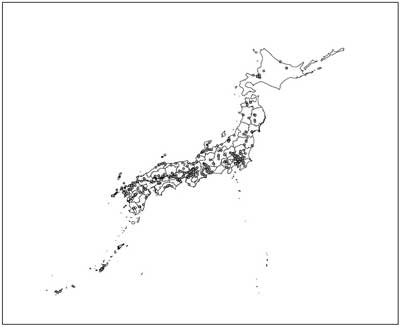



|
TOPICS BONOBO Chimpanzee "Ai" Crania photos Itani Jun'ichiro archives Open datasets for behavioral analysis Guidelines for Care and Use of Nonhuman Primates(pdf) Study material catalogue/database Guideline for field research of non-human primates 2019(pdf) Primate Genome DB 
Primate Research Institute, Kyoto University Copyright (c) |
Japanese Homogeneous diet of contemporary Japanese inferred from stable isotope ratios of hair
Soichiro Kusaka, Eriko Ishimaru, Fujio Hyodo, Takashi Gakuhari, Minoru Yoneda, Takakazu Yumoto, Ichiro Tayasu
Abstract
The globalization of food production and distribution has homogenized human dietary patterns irrespective of geography, but it is uncertain how far this homogenization has progressed. This study investigated the carbon and nitrogen isotope ratios in the scalp hair of 1305 contemporary Japanese and found values of -19.4 ± 0.6‰ and 9.4 ± 0.6‰ (mean ± SD), respectively. Within Japan, the inter-regional differences for both isotope ratios was less than 1ãàŽ°, which indicates low dietary heterogeneity among prefectural divisions. The carbon and nitrogen isotope ratios of the hair showed a significant correlation with the results of questionnaires on self-reported dietary habits. The carbon isotope ratios from Japan were lower than those in samples from the USA but higher than those in samples from Europe. These differences stem from the varying dietary proportions of food products originally derived from C 3 and C 4 plants. The dietary variation of Japan is as small as those of Europe and USA and smaller than those of some Asian countries. These results indicate that dietary homogeneity has progressed in Japan, which may indicate the influence from the spread of the Western-style diet and food globalization, although dietary heterogeneity among countries is still preserved.  Figure 1: Geographic locales of hair sample donors using the ArcGIS software Bibliographic information
Scientific Reports 6:33122 (DOI: 10.1038/srep33122) 2016/09/14 Primate Research Institute
|